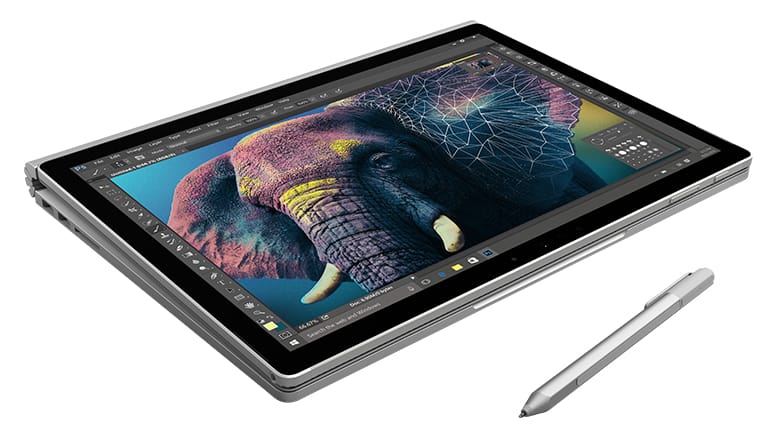Windows laptops and form factor: how big is too big, and how small is too small

The size of Windows PCs has gone through several changes over the past few decades. From the set-top boxes of the 80s and early 90’s, through the tower phase that gave rise to a generation of PC builders and DIY’ers, to the ultra-compact designs that ultimately lead to the modern laptop and ultraportable 2-in-1, we have seen it all, and some of us have closets full of discarded old cards, memory, CPUs and drives to remind us of how much the PC has changed.
Current trends follow a strictly practical logic in regard to sizing laptops, with a typical form factor averaging 13-14 inches displays, and anything south of an inch in total thickness. While tablets have greater freedom to swing from 12 inches down to 7 or 5, laptops running Windows 10 in desktop mode require a bit more screen real estate, even though they can operate just fine on a touchscreen, when switching to tablet mode.
With that said, laptops still come in a variety of sizes, from the 17 inch gaming monsters and professional laptops with desktop-like performance, to small ARM-powered netbooks, like Google Chromebook.
Choosing the right form factor depends heavily on what type of user you are, and the investment you make in a laptop that is designed specifically for you, is often a smarter investment than a laptop purchased according to its price tag.
Pro laptops and gaming laptops
As mentioned earlier, pro and gaming laptops screen sizes are typically in the range of 15 to 17 inches, with some exception going as far as 21 inches, although that is not the norm.
If you are a professional with special requirements in regard to performance and tasks, or a hardcore gamer, this category is worth a look. The cost of a pro laptop, such as an MSI G-Series, or an Asus ROG, can start at $1200, all the way up to several thousands, This is because these laptops are built with desktop-class hardware, and engineered for performance rather than battery life or portability. A pro or gaming laptop, in fact, is not the kind of laptop that one would usually bring to a coffee shop, and write a novel on it. These are the kind of laptops that one would hook up to multiple displays, and do some serious video editing, image processing, or hardcore gaming at full specs, with a proper set of surround sound speakers, and a very comfortable chair.
As mentioned earlier, battery life is also a concern. A pro or gaming laptop’s battery doesn’t last very long, depending on the task being handled. Two-three hours are the most one can hope from regular usage.
Mid-range productivity laptops and 2-in-1’s
Microsoft Surface Book, Vaio Z, and similar devices, fall into this category, which is worth exploring when looking for a laptop that, while not as powerful as a gaming laptop or as a production machine, it offers performance that are perfect for both home use and office use, with a decent balance of performance and battery life.
The form factor of these devices spans from 15 to 13 inches, and are typically powered by Intel Core processors such as i5 and i7.
These are also the perfect devices for creativity, as many of the latest models come with a touchscreen, and can be used as tablets.
These devices promise an extended battery life, sometimes going as far as 8-9 hours of regular usage, however these claims may differ when it comes to real-life experience, versus lab testing.
Entry-level productivity laptops
Smaller productivity laptops in the range of 13 to 11 inches display, can still be rather powerful, within the right context. For example, students, faculty, and office workers usually find devices like these to be powerful enough for daily tasks. In this category we can find many entry-level productivity Windows 10 laptops and even a few 2-in-1’s with touchscreen capabilities.
The greatest feature about these laptops is battery life, as many of these are powered by fanless CPUs with low voltage requirements, and some can truly offer all-day battery life, if you can deal with the lesser performance compared to mid-range laptops.
Netbooks and Chromebooks
If your objective is to work mostly online, and use cloud apps for most of your tasks, netbooks and Chromebooks could be right up your alley. Windows 10 laptops averaging 11 inches in size offer a lot in terms of productivity while operating in the cloud, with a wide range of apps from the Windows Store, as well as support for desktop applications like MS Office and Adobe CC.
These can be a better option than Chromebooks, if you plan on sticking to a certain set of Windows applications, and cannot compromise by relying solely on Google apps.
Needless to say, these are the least powerful machines in the list, however, they are also very reliable and surprisingly useful, with a phenomenal battery life.
Ready to shop?
PortableOne has the best deals on Windows 10 Pro laptops, featuring the latest hardware-based security features, and full BitLocker encryption to protect your files from prying eyes.